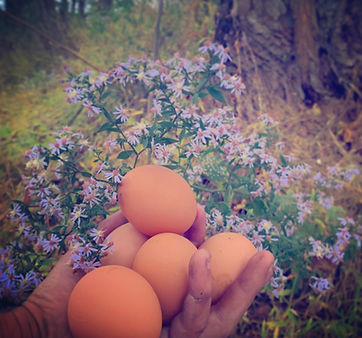
chicken Library
at Harmony Farms
Troubleshooting Common Hatching Problems with Chicken Eggs
How to Identify, Prevent, and Resolve the Most Frequent Issues in the Incubator
Andréa deCarlo
author:
category:
Hatching Eggs
tags:
share:
Hatch didn’t go as planned? Learn how to troubleshoot chicken egg hatching problems and improve your next incubation with these must-know tips!
summary:
How to Identify, Prevent, and Resolve the Most Frequent Issues in the Incubator
This guide covers the most common hatching issues and how to troubleshoot them, so you can improve your hatch rate next time and give your chicks the best possible start.
Poor Hatch Rates
Possible Causes:
Incorrect temperature or humidity
Unstable incubation environment
Improper turning
Infertile or damaged eggs (especially common with shipped eggs)
What to Do:
First, assess the incubator: double-check with a calibrated thermometer and hygrometer. Even a one-degree fluctuation can impact development. Still air incubators often run too cool or hot without external monitoring. Also, review your humidity logs—too high or too low at the wrong time can cause embryonic death.
If using shipped eggs, remember that hatch rates are often lower due to internal damage from jostling. Candle carefully and give eggs extra time—some shipped chicks hatch a day or two late.
Early Embryo Death (Before Day 7)
Possible Causes:
Bacterial contamination
Old or improperly stored eggs
Poor ventilation
Temperature spikes or drops early in incubation
What to Do:
Clean your incubator thoroughly between hatches and avoid using dirty or cracked eggs. If several eggs develop blood rings or show no growth after Day 7, bacteria is a likely culprit.
Ensure the incubator is in a draft-free location and not placed in direct sunlight or near a vent, where sudden temperature changes can occur.
Late Embryo Death (Days 18–21)
Possible Causes:
High humidity throughout incubation
Inadequate oxygen
Turning failure (especially in days 1–18)
Excessive handling or incorrect lockdown procedure
What to Do:
Eggs need lower humidity for most of incubation—35–45% is ideal—so the air cell can grow properly. If the air cell is too small by Day 18, the chick may drown or fail to position itself for hatching.
Also make sure the eggs were turned consistently (either manually or with an automatic turner). Improper turning causes poor membrane development and abnormal positioning.
Lockdown humidity (65–75%) should begin at Day 18, and you should avoid opening the incubator once chicks begin to pip.
Chicks Pipping But Not Hatching (Stuck or “Shrink-Wrapped” Chicks)
Possible Causes:
Low humidity during hatch
Too frequent incubator opening
Weak or malpositioned chicks
What to Do:
The most common cause of shrink-wrapping is a sudden drop in humidity while a chick is pipping. This dries out the inner membrane and traps the chick.
To avoid this, don’t open the incubator during hatch unless absolutely necessary. If you must assist, use a warm, humid environment (a steamy bathroom or warm towel tent) and proceed slowly. Only help if the chick has been stuck for over 24 hours and is fully ready to hatch.
Sticky or Wet Chicks
Possible Causes:
Humidity too high during incubation
Poor air circulation
Dirty or oily eggs
What to Do:
Sticky chicks indicate that the albumen (egg white) did not dry and absorb properly. This often means humidity was too high in the first 18 days, preventing correct air cell development. Make sure your incubator has good airflow, and avoid overfilling water channels.
Malformed or Weak Chicks
Possible Causes:
Vitamin or mineral deficiency in parent flock
Genetic issues
Extreme temperature or humidity conditions
Bacterial contamination
What to Do:
You can't fix genetic problems, but you can reduce their impact by sourcing eggs from a reputable breeder. Always feed breeding flocks a balanced layer or breeder feed and store eggs properly before incubation. Avoid incubating eggs that are misshapen, porous, or cracked.
Chicks Dying After Hatch
Possible Causes:
Inadequate brooder setup
Chilling or overheating
Poor nutrition or dehydration
Residual incubation weakness
What to Do:
Once chicks hatch, they need to dry in the incubator before being moved to a brooder with consistent heat (95°F the first week), clean water, and a starter feed. Weak or small chicks may need electrolytes or special care for the first 24 hours.
Summary
Troubleshooting hatching problems isn’t just about saving one hatch—it’s about learning and improving. Keep detailed records, candle regularly, and review each hatch so you can make changes for the next round.
Even experienced chicken keepers deal with losses, but with the right knowledge and care, you’ll increase your success over time and enjoy many fluffy new arrivals in your brooder.
.jpg)












































